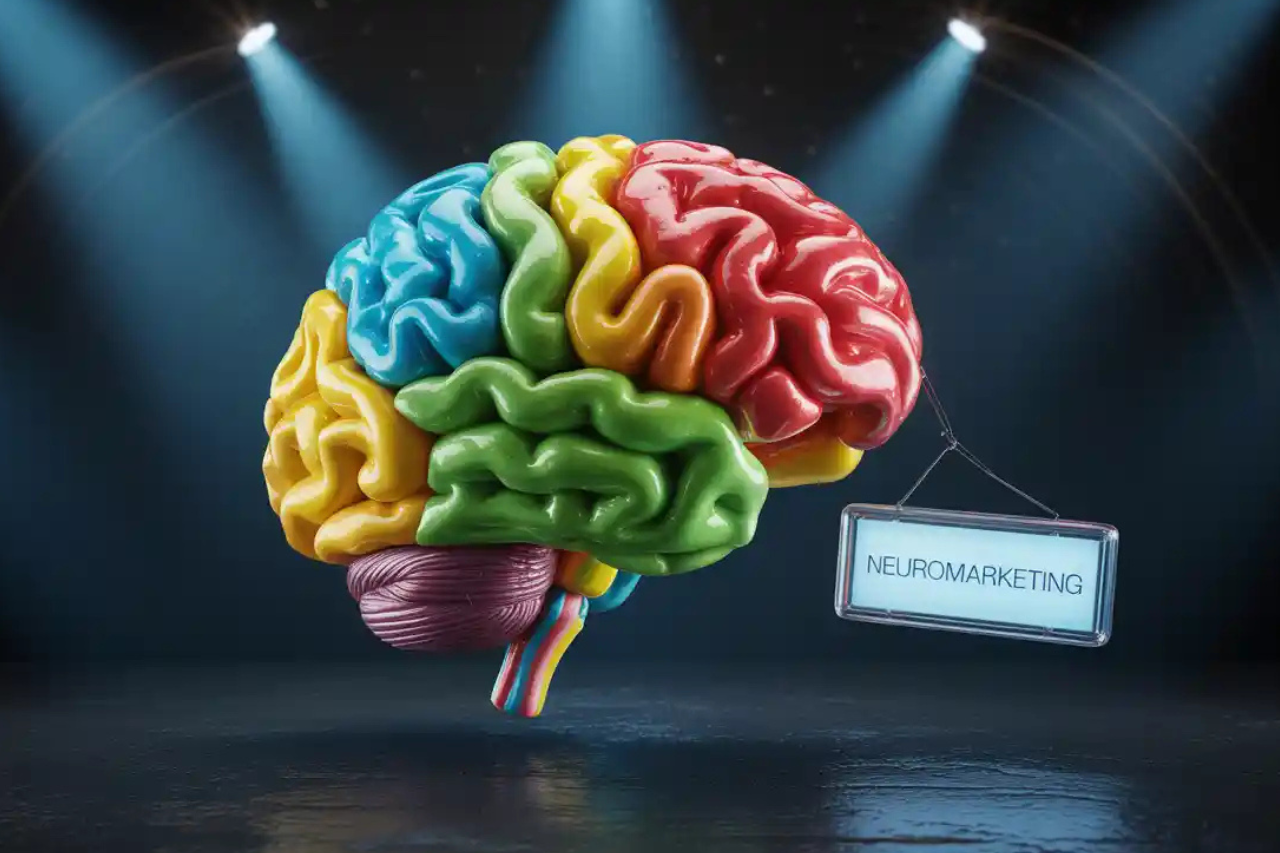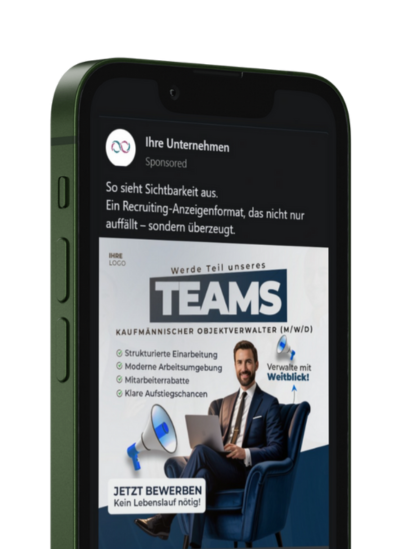We combine neuromarketing with performance recruiting – to attract candidates who truly fit.


Neuromarketing & Psychology
We don’t believe in loud advertising – but in subtle, targeted impulses that move the brain.
Behind our strategy lies psychological sensitivity and neuroscientific expertise that truly reaches candidates – exactly where decisions are made: in the subconscious.
Emotional Triggers
Visual Stimulus Design
Decision Psychology


Behavioral Analysis
Empathetic Targeting
Psychological Pre-Qualification
Not just strategy. Psychological understanding.
Neuromarketing and psychology for us means: no marketing for clicks – but for minds and hearts.
We combine psychology, neuroscience, and creativity to trigger reactions that stick – and reach people exactly where decisions are truly made.

Neuromarketing: Communication that hits the brain
Most decisions are made subconsciously – in milliseconds. Neuromarketing uses this insight to trigger emotional reactions intentionally.
We design campaigns based on neuropsychological principles:
– Images that activate emotions
– Texts that trigger unconscious actionsy
– Structures that the brain can quickly process and store positively
This way, your message is not just seen – but understood, felt, and remembered.
Psychology in Recruiting: People at the center
You don’t recognize good candidates by a click – but by a reaction.
Psychologically grounded recruiting means understanding behavior and addressing it purposefully.
We analyze:
– Thought processes & subconscious decision patterns
– Emotional triggers along the candidate journey
– Subtle signals that either drive or block action
The result: Ads that don’t overwhelm – but emotionally reach exactly the right candidates.
Learn more about psychological recruiting.


Visual Psychology in Design
People don’t decide based on logic – but on feeling.
Colors, contrast, eye direction, and shapes influence our subconscious: whether we take something seriously, ignore it, or trust it.
We use targeted design elements to:
– Trigger the right emotion at the right moment
– Improve readability & comprehensio
– Build trust and prompt action
Design isn’t decoration – it’s a silent persuader in the background.
Cognitive Triggers in Recruiting
Every ad is an invitation to act – if it says the right thing at the right moment.
We use psychological mechanisms to ease decisions and reduce resistance.
Our tools:
– Principles like reciprocity, scarcity, and social proof
– Content flow that follows natural decision-making paths
– Psychological safety instead of pressure
Your ad won’t feel like advertising – it will feel like a natural impulse.

Ihre Fragen – Unsere Antworten
What is Neuromarketing?
Neuromarketing uses findings from brain research to design advertising messages that work emotionally, quickly, and intuitively. It’s based on how people make decisions – mostly subconsciously – and helps companies target exactly there.
How does neuromarketing work?
Our brain responds strongly to emotions, visuals, and clear stimuli. Through targeted use of colors, symbols, and wording, neuromarketing creates attention, builds trust, and increases the conversion rate – especially in recruiting.
Why is it important in recruiting?
Because applicants don’t decide rationally. Neuromarketing helps meet the emotional needs of the audience. The result? Ads don’t get ignored – they trigger the impulse: “I belong here.”
What does emotional language mean?
Instead of purely informational text, we use emotionally activating words that create closeness, trust, or excitement. It doesn’t feel like advertising – it feels human.
What is a trigger?
A psychological trigger is a stimulus that immediately causes a reaction – e.g. appreciation, security, or belonging. We use these to generate subconscious attention.
How do we test effectiveness?
With A/B tests, we compare which variation performs better – e.g. via image changes, headlines, or CTAs. This helps us learn what really works.
What role does design play?
Visual storytelling and smart stimulus design often decide in seconds whether someone keeps reading. We combine aesthetics with psychological structure.
Can this be manipulative?
No – we use neuromarketing ethically. It’s not about manipulation, but about understanding and connection. Good communication feels aligned, not forced.
How does color influence behavior?
Colors trigger feelings and associations.
Blue = trust
Red = urgency
We use these effects purposefully in visuals and CTAs.
Which texts work best?
Short, clear, emotionally activating texts work better than long descriptions. We analyze which phrases touch people emotionally – and use them in recruiting.
What is psychological recruiting?
It’s about more than just resumes. We analyze behavior, language, reactions, and motives of applicants to find out who truly fits – professionally, personally, and emotionally.
How does pre-qualification work?
We use targeted questions, small tests, and behavioral analyses to understand applicants even before the interview – and to reduce misplacements and employee turnover.
Why is this useful?
Many problems stem from human mis-matching. People who fit into a team stay longer. Our methods help identify this early on – for sustainable recruiting.
How do you recognize motivation?
Through speech patterns, reaction behavior, and response structure, we can interpret whether a candidate truly wants the job – or just feels obligated. That’s how we distinguish genuine interest from a sense of duty.
What’s the benefit of behavioral analysis?
It shows how someone thinks, decides, and communicates. These insights help us better align managers and new employees from the start.
Is this legally okay?
Yes. Our psychological methods are based on observation and voluntary input. We fully respect all data protection and ethical guidelines.
What is empathetic targeting?
We address people in a way that makes them feel understood. Through tone, imagery, and word choice, we create connection – especially important for sensitive audiences.
Why do applicants react emotionally?
Because jobs relate to identity and security. People who feel emotionally understood are more likely to apply – especially in high-stress professions.
What is social proof?
People look to others. Testimonials, employee quotes, or numbers create a sense of reliability and persuasion – which is why we integrate them intentionally.
How does the brain decide?
Often subconsciously. That’s why we use clear, emotionally guided stimuli and logical structure. We guide candidates safely through their decision.
What is a psychological profile?
A profile summarizes a candidate’s communication style, response behavior, and decision patterns. It helps assess fit, not just qualifications.
Are there any risks?
Only if used incorrectly. That’s why we work transparently, with clear questions and no manipulation. The goal is always: real fit over fake image.
How do you measure fit?
Through clear indicators: response behavior, situational reactions, motivation, and communication style. Together, this creates a full picture – often clearer than after the first interview.
What’s the benefit for the company?
Fewer bad hires, better team dynamics, faster onboarding, and higher satisfaction – for both managers and team members.
Psychology saves money.
STILL HAVE QUESTIONS?
Let us help you rethink your strategy.

Free Consultation
Let’s talk with no obligation and discover untapped potential – start with a short conversation.

Individual Analysis
We’ll analyze your ad free of charge – and show you how to generate more impact and better applications.

Mini HR Service
We support you not only with ad copy – but also with pre-selection of the right candidates.
Ready for more applications?
Test our recruiting campaigns now – risk-free and with clearly measurable results.


contact us
- 49 6221 7739860
- kontakt@skarnetmedia.de
- Bergheimer Str. 147, 69115 Heidelberg
legal & Info
© 2025 Skarnet Media. All rights reserved.